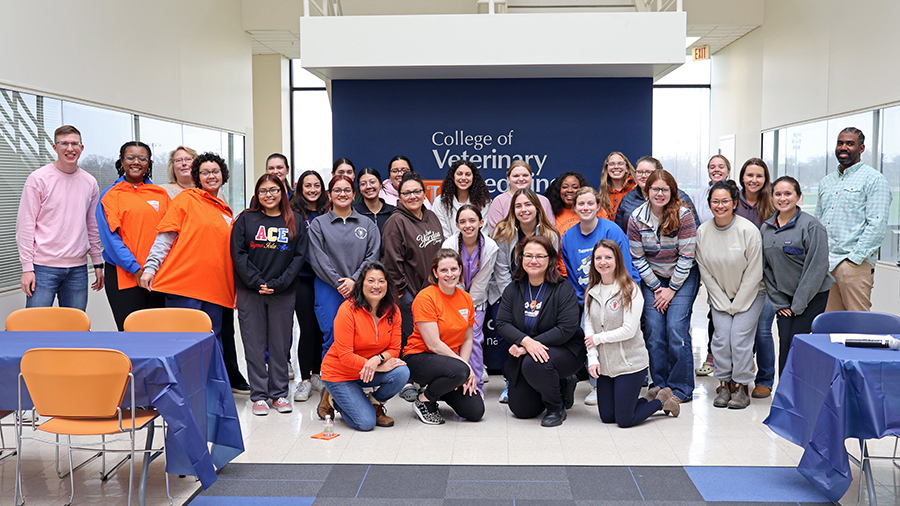FAQs for veterinary practitioners
See also:
- FDA: Surgical Mask and Gown Conservation Strategies (link to Anesthesiology News)
- COVID-19: Recommendations for Veterinary Practices (from University of Illinois)
My practice can no longer obtain surgical masks. Are they necessary in the operating room (OR)?
It is recommended that all personnel wear a surgical mask in the OR to prevent contamination of the surgical site and surgical instruments with droplets from the nose and mouth. It is important that the masks be used properly (i.e., tied appropriately, and so forth) for them to be effective.
We recognize that there are many field procedures in which masks are not routinely used, and that evidence from human studies is equivocal about the benefits of wearing masks in certain situations, but it is still considered a best practice.
It’s also important to note that in human hospitals, nosocomial infectious sources (such as MRSA) are major problems. In contrast, in veterinary surgery, our patients—particularly the surface of their skin—represent the primary source of pathogens.
In cases where surgical masks are no longer available and surgery is necessary, care must be taken to avoid contamination by coughing, sneezing, sweating, etc. Other measures to reduce the risk of surgical site infections—appropriate prophylactic antibiotic use, handwashing, appropriate gloving, surgical site preparation, careful tissue handling, good air flow, reduced surgical times, etc.—become even more critical.
If elective procedures can be postponed until appropriate protective equipment is available, that would be recommended.
Ideally, surgery should not be performed by someone who is ill, regardless of whether they are wearing a mask.
If I cannot obtain disposable surgical masks, can I use washable cloth ones?
While studies are limited in this area, our experts recommend that a washable cloth mask is likely better than nothing. However, these masks should be washed on a daily basis and, of course, not shared between staff!
Can my practice sterilize disposable single-use surgical masks for reuse?
We have not attempted this in our hospital, and are unsure if there is a safe way to sterilize the traditional disposable masks. One alternative would be to purchase cloth masks that could be washed daily. Another approach is to ration remaining disposable surgical masks to the individuals who need them most (surgeon and assistant).
Do I need to wear a new surgical mask with each patient?
No. Surgical masks help prevent you from contaminating a patient’s surgical site. Therefore, using the same mask between patient surgeries is safe. However, masks that become contaminated with blood or other bodily fluids should be changed between procedures.
What are the best evidence-based approaches to infection control in the OR?
For procedures with aerosolization, such as obstetrics, dentistry, and necropsy, masks are strongly recommended by both the American Animal Hospital Association and the National Association of State Public Health Veterinarians.
Surgeon hand preparation, the use of sterile surgical gloves, and appropriate surgical site preparation have been shown to have an important impact on surgical site infections (SSIs). Appropriate hand disinfection combined with the wearing of surgical gloves dramatically decreases SSI development.
Although the use of surgical caps has not been scientifically proven to reduce SSIs, they are recommended, if not required, by many professional organizations as a standard measure for surgical site contamination prevention (particularly for orthopedic procedures). We strongly recommend the use of surgical caps in veterinary ORs.
Booties have been shown to have limited effect in preventing SSIs, however, they have been shown to decrease bacterial load in the OR, and are therefore recommended.
The use of appropriate prophylactic antibiotics is encouraged for all clean-contaminated and contaminated surgeries. There is debate over whether prophylactic antibiotics are needed for clean procedures. For long procedures, re-dosing with antibiotics during the procedure may be necessary.
Minimizing operative time is also critical to preventing post-surgical infections. Effective pre-operative planning and efficient intra-op execution are key.
Sources:
https://journals.sagepub.com/doi/pdf/10.1177/0310057X0102900402
Content Experts:
- Annette McCoy, DVM, MS, PhD, DACVS
- Will Sander, DVM, MPH
- Matthew Stewart, BVSc, MVet, PhD, DACVSMR
Compiled by Dr. Ashley Mitek.

![[surgeons in OR with face masks]](https://vetmed.illinois.edu/wp-content/uploads/2021/04/news-covid19-facemasks.jpg)


